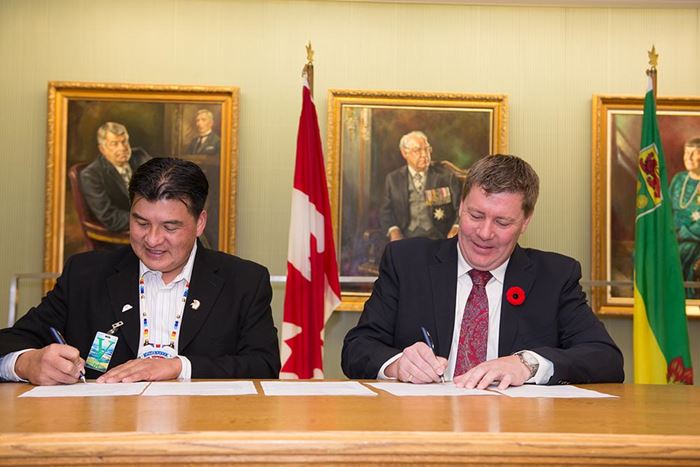Released on November 7, 2016
Today, the Saskatchewan Ministry of Environment and the Federation of Sovereign Indigenous Nations (FSIN) have jointly endorsed a set of guidelines related to entry onto First Nations reserves.
The agreement, which formalizes guidelines already in place between the ministry and a number of First Nations, outlines a process for conservation officers to follow when accessing First Nations reserves to conduct law enforcement duties.
“The guidelines speak to a shared commitment to protecting and respecting our natural resources and to the continued co-operation between First Nations and government,” Environment Minister Scott Moe said. “By sharing information, working together, and respecting the authority of each jurisdiction, we will ensure the ongoing success of this relationship.”

In May of 2016, FSIN Chiefs in Assembly passed a resolution endorsing a set of guidelines regarding provincial conservation officers’ entry onto First Nations reserve lands.
“The new set of guidelines recognizes, respects and abides by our Treaty right to hunting, fishing, trapping and gathering,” FSIN Chief Bobby Cameron said. “This is an example of how an issue can be resolved as long as the governments are willing to work together.”
Each First Nation is asked to designate a point person for ministry conservation officers to contact before entering First Nation reserve land for law enforcement purposes such as conducting an investigation.
If the primary contact is not available, and entry is necessary and time sensitive, the primary contact would be notified of the entry and the rationale as soon as possible.
The ministry and the FSIN will continue to identify and address practical operational issues where they have a shared interest.
-30-
For more information, contact:
Jamie Gibson
Environment
Regina
Phone: 306-798-3900
Email: jamie.gibson@gov.sk.ca

